InnoLabs I1000-PII Personal Computing Tablet User Manual ch1
InnoLabs Corporation Personal Computing Tablet ch1
InnoLabs >
Ch1

Introduction
Congratulations. You are the proud new owner of one of the most
advanced computing devices on the market today. Getting to know it
thoroughly and using it correctly will give you years of reliable, trouble
free service.
Combining all the speed and functionality of a desktop computer with
the mobility of a hand-held device, the Qbe Personal Computing Tablet
“in an all in one format” integrates top of the line microprocessors,
high capacity storage ( a hard disc that begins at 6 GB) memory from
64 to 512 MB, handwriting and speech recognition software and
CCD camera.
As such it is essential tool for users across a wide professional platform
- from the retail business, barcode scanning and inventory keeping to
dictation, architecture, graphics design and distance learning.
The docking station features a cold-swappable device bay, additional
I/0 ports the full-size keyboard and mouse, high fidelity stereo
speakers and a battery recharger.
With top and bottom cast in Magnesium it is a hardy piece of
equipment that will give you years of lasting service provided simple
precautions and care is taken with setting up, maintenance and on road
usage.
We strongly recommend, unless you have had previous experience of
using notebook computers, that before turning on the Qbe you first
read attentively these installation, set up and maintenance notes. This
will help you avoid unnecessary inconvenience and delays when you sit
down to tackle your first Qbe assignment

1-2 Getting Started
1
Getting Started
This chapter briefly introduces the features and components of the
Qbe. It then tells you step-by-step how to get it up and running, and
finally gives tips for taking care of the Qbe.
Unpacking the Qbe
You should find these standard items after unpacking the shipping carton:
• Qbe Personal Computer Tablet
• Carrying bag
• Accessories:
• AC adapter
• AC power cord
• Battery pack
• Driver CD
• Porticle
• Keyboard
• Mouse
• CCD Camera

Getting Started 1-3
1
• This User Guide
Inspect all the items to see if anything is damaged or missing. If
so, notify your dealer immediately.
Keep the shipping carton and all packing materials in case you need to
ship or store the computer in the future.

1-4 Getting Started
1
Features
This Personal Computer Tablet has been designed with the most
advanced mobile computer technologies to satisfy professional users’
needs.
The Qbe features:
• CPU
Intel Dixon Pentium-II series microprocessors (366/400)
Intel®Celeron®/Pentium II® 400/433/466 mhz
Pentium III (Coppermine) 450-700MHz with Geyserville from
550MHz
Package UPGA2 (Pentium-III series) UPGA1 (Pentium-II series)
• System Chipset
North Bridge Intel 440BX
South Bridge Intel PIIX4
• System Memory
Sockets 2x144 pins SODIMM socket, supports SDRM
Size: Up to 2x256 = 512MB
• BIOS
Source Code: System Soft
ROM size: 256K
Power Management: Supports power on suspend, suspend to RAM
and suspend to disk feature.
On-Now: Supports On-Now (instant on) feature by power button.
HPM: Supports HPM features of Battlife technology
Icon: Click to go to suspend to disk mode and change battery (add on
07/14/99)
• Display
LCD: Supports both 13.3-inch TFT XGA and 12.1” TFT SVGA
Resolution: Supports 102x768 on 13.3” and 800x600 12.1”

Getting Started 1-5
1
Display Mode: To support both landscape and portrait mode
VGA chip: SMI 721
Video Memory: 8MB embedded I VGA chip
Graphic Bus: AGP
• Audio
Chipsets ESS Maestro 1980 M3 audio-accelerator
and ESS 1921 AC97 CODEC and
NS LM4863 power amplifier
• PCMCIA
Controller: TI PCII250A cardbus controller, PCMCIA 2.1/3.0
compliant and supports R2 cardbus and ZV port
Slot: supports two type II or one type III slot
• Storage
CD ROM Bay: 24xCD ROM, exchangeable with CD RW, DVD
and LS 120
HDD: Supports 2.5” drive at 12.7mm height
• Pointing Device
Keyboard: No internal keybord
Touch Screen: Supports both Finger touch input or Pen input with
Microtouch solution
Connector: One audio jack to support the Pen connection.
• Battery
Smart Battery
Cells in a pack: 12 cells in each pack (2.5 to 4 hours autonomy)
Considering 6 cell pack in same housing.
Optional Lithium Ion batteries
Battery Guage
Back Up Battery: To support 3-4 minutes main battery warmswap
(suspend to disk mode)
• Communication (Pentium-III)
Min PCI: Porticle
Connector: With built-in one RJII and one RJ45 connector
*Pentium II
Min PCI: Supports optional Mini PCI type 3a(disabled when docked

1-6 Getting Started
1
with Qbicle or Porticle
Connector: With built-in one RJII and one RJ45 connector
• Connectivity
One 13964. Supports up to 400Mbps (disabled when docked with
Qbicle or Porticle)
• I/0
Controller: Winbond W83877
USB: One connector
IrDA 1.1 FIR and SIR, Sharp ASK, IR is disabled whendocked with
Qbicle or Porticle)
Audio: One Mic-in and one audio out connector
• ICM Port
CCD Camera: To support module CCD camera, resolution up to
270K pixels
Third Party Device: To be defined later
Modular Bay for optional cameras
• Operating Systems
Microsoft© Windows© 98,NT© or 2000
• Dimensions
In mm: 181(l) x 132.6 (w) x 63 (h)
In inches
• Weight
In pounds
In kilograms: 2.9 + 380g (six cell battery)
• E-Commercial
Smart Card and Magnetic Strip Card Reader
• Included Accessories
88-key Windows-compatible USB keyboard
PS/2 mouse
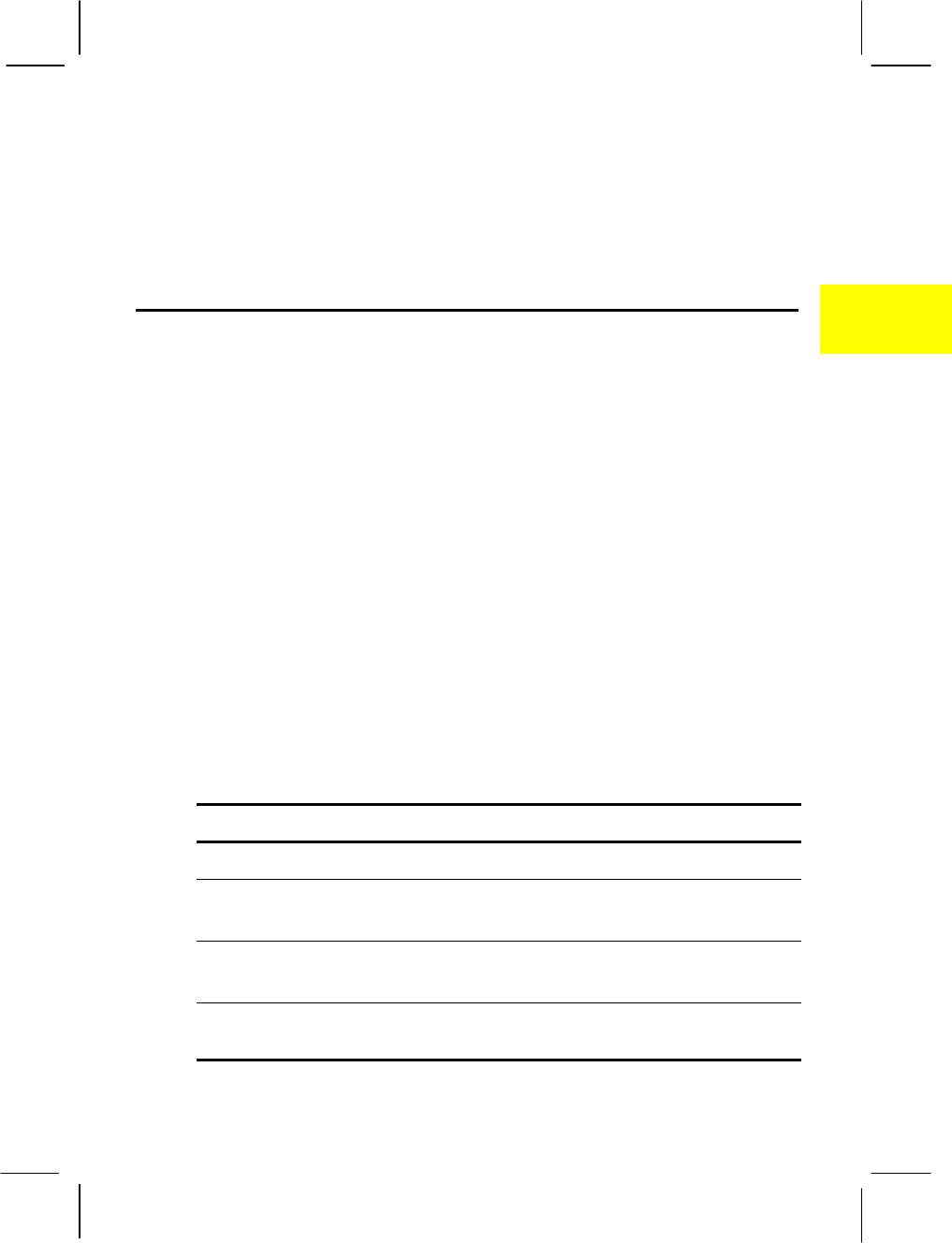
Getting Started 1-7
1
• Optional Items:
Qbicle/Porticle: S-TV-out; VGA; COM Port; PS2; Game Port;
USB
System View
Below are figures that identify the components of the Qbe, followed by
brief descriptions.
Right-Side
(insert diagram)
Figure 1-1. Right-Side View
Ref. Component Function
ŒCard Reader Both Magnetic Reader and IC card R/W
•Battery Pack The internal power source for the computer.
(See details in Chapter 3.)
ŽCD ROM Usually configured as drive D of the
computer, accepts a compact disk.
4IR Allows wireless communications with an IR-
compliant device; supports SIR, FIR, and
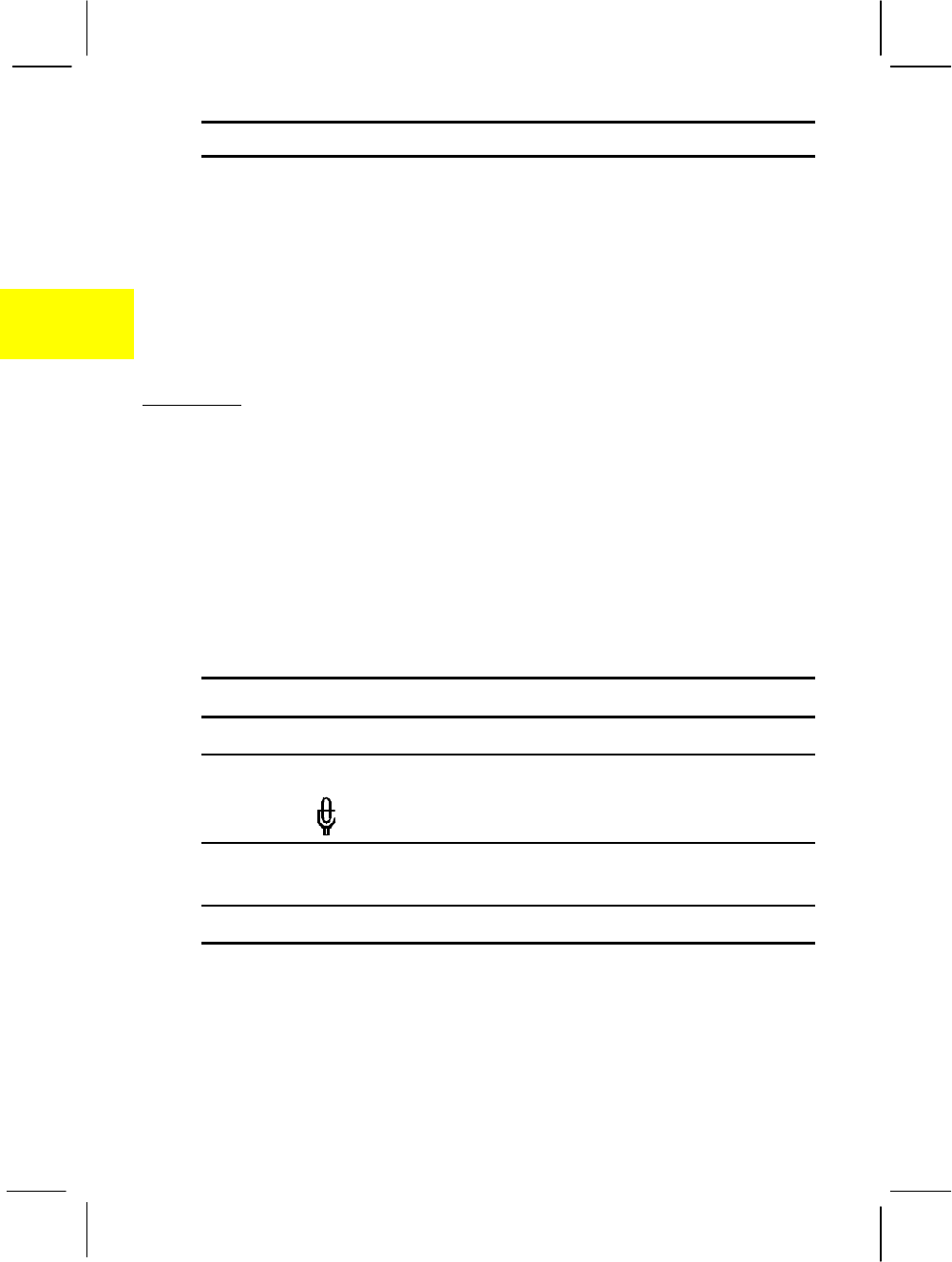
1-8 Getting Started
1
ASK standards.
Left-Side
Insert diagram
Figure 1-2. Left-Side View
Ref. Component Function
ŒPS/2 Port
•Microphone Jack
( )
Used to connect external microphone.
ŽStereo Speaker
Jack
Connects stereo headphones or external
stereo speakers for sound output.
•AC Power Jack Connects the AC adapter.
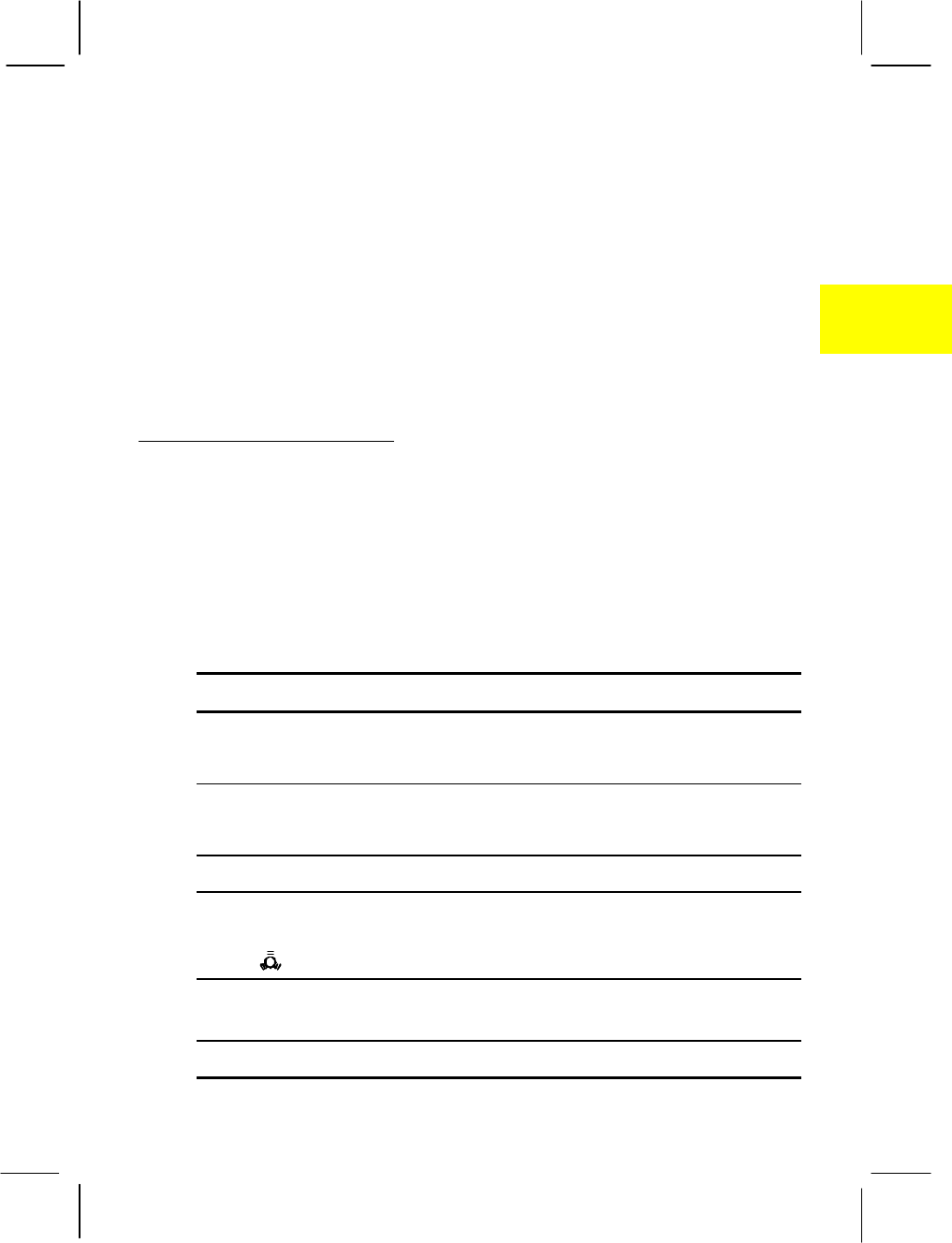
Getting Started 1-9
1
Rear of the Qbe Casing
(insert diagram)
Figure 1-4. Rear View
Ref. Component Function
ŒPen Holder .
•PCMCIA slots Two Type ii or One type III
Supports CardBus and ZV
ŽUSB Port
•IEEE 1394
Connector
( )
Connects a 1394 device.
•CCD Module Bay For Installation of optional digital camera
‘RJ-45 LAN Port Connects the network cable
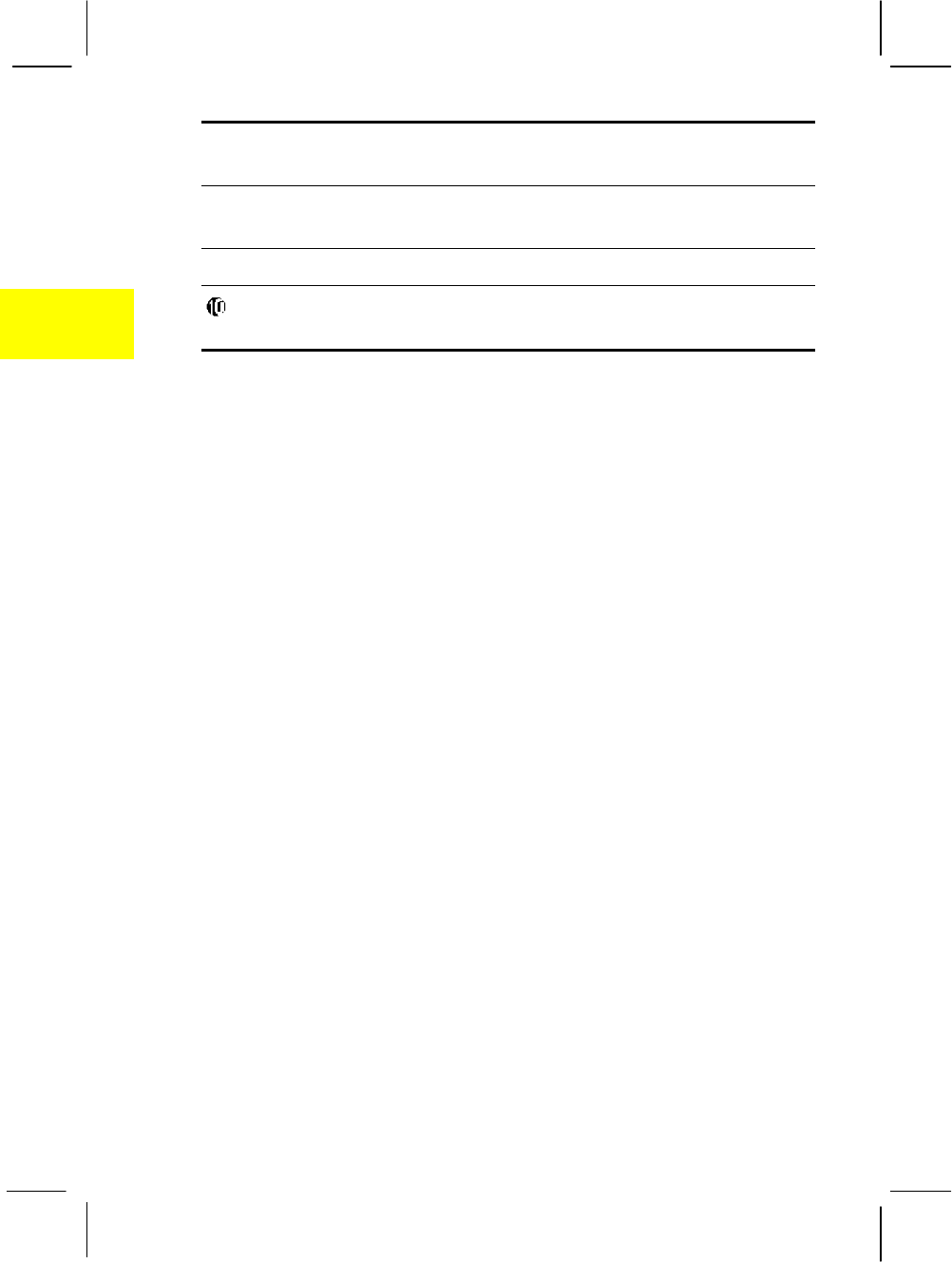
1-10 Getting Started
1
’RJ –II Modem
Connector
Connects the phone cable
“Pen Connector
”Reset Switch
Power On
Switch )
Powers on the Qbe.
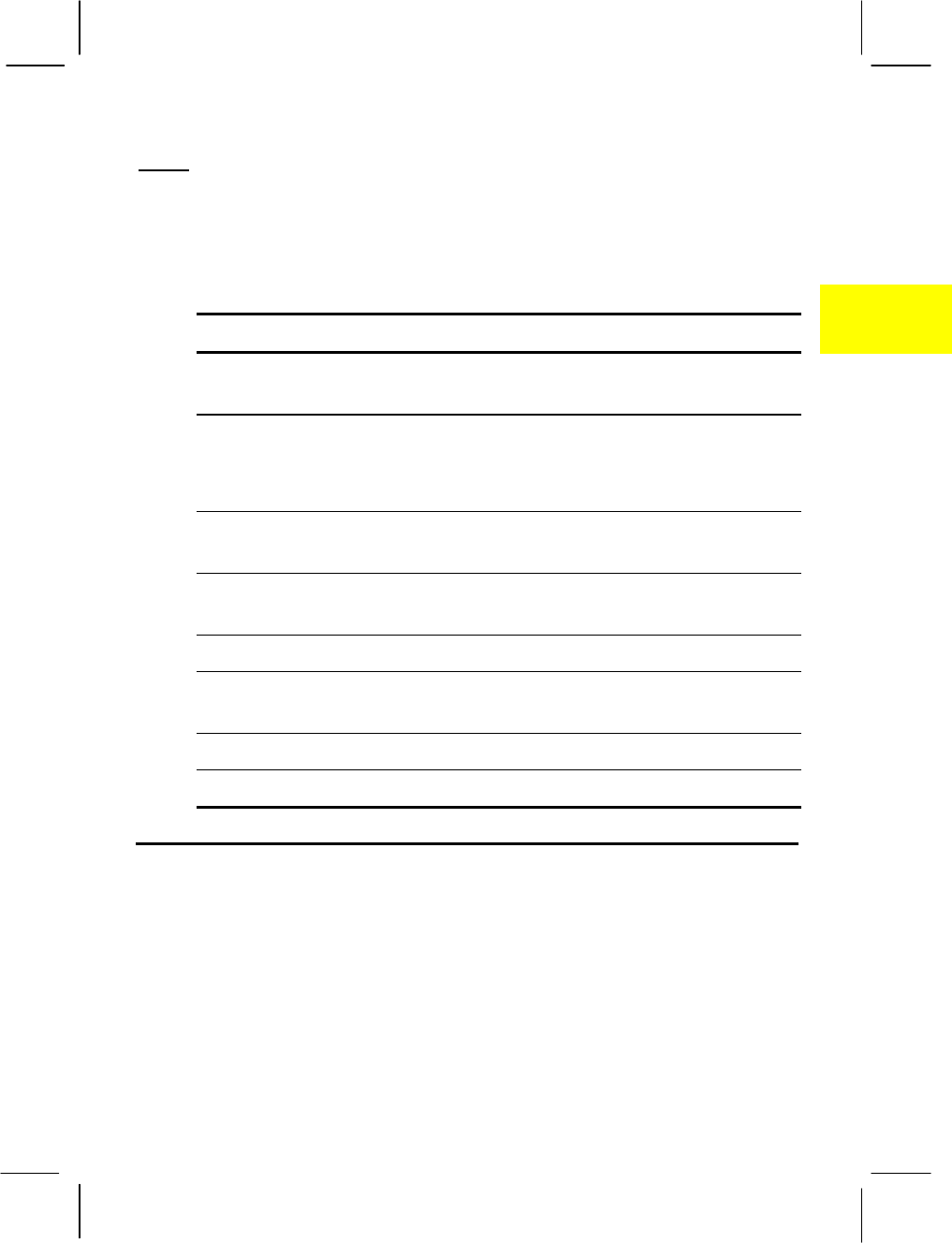
Getting Started 1-11
1
Top
(insert diagram)
Figure 1-5. Top-Open View
Ref. Component Function
ŒMicroTouch
Control
Input with finger or pen.
•LCD
13.3 ” Standard
TFT
Displays the output of the computer on the
screen
ŽRight Button Performs function of right hand mouse
button.
•Page UP Down
Button
Scrolls page
•Indicator Panel Displays the status of battery or hard disc
‘Microphone For sound input. Automatically disabled if
external microphone connected
’
“
Bottom
Hard Disk Drive Drive C of the Qbe
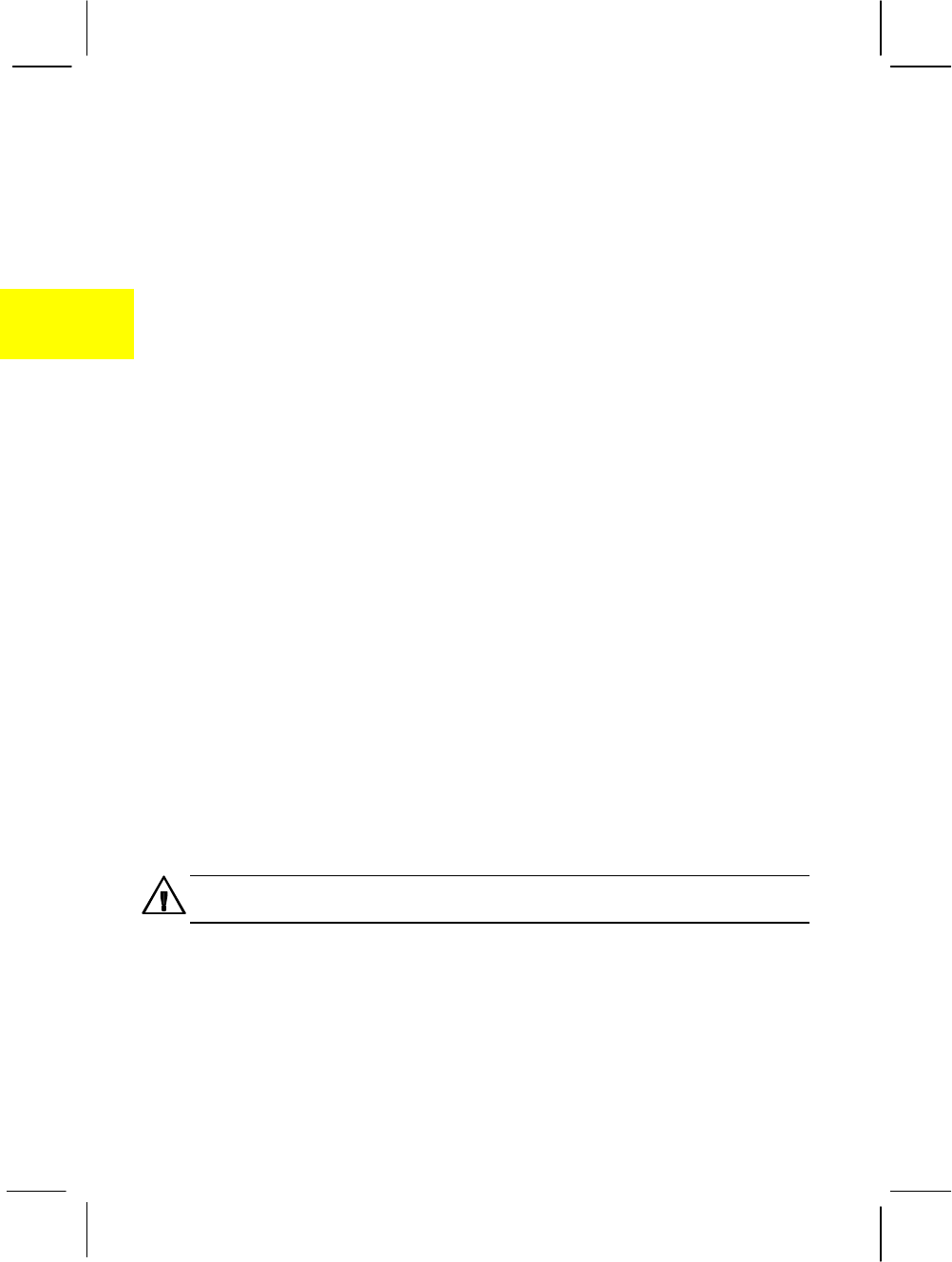
1-12 Getting Started
1
Preparing the Computer for Operation
The Qbe runs on either external AC power or the rechargeable battery
power. For first time operation, you are advised to connect the AC
adapter for external power.
Installing the Battery Pack
The battery pack comes separately. Before you begin to use the
Personal Computer Tablet, you need to install the battery pack.
Follow this procedure to install the battery pack:
1. Make sure the computer is not turned on or connected to AC
power..
2. Slide the locking latch on the ride hand side of the Qbe to the
unlocked position and remove the bay cover.
3. Slide the battery pack into the bay.
(insert diagrams)
Figure 1-6. Installing the Battery Pack
5. Replace the cover. The locking latch should click into the locked
position.
Connecting to AC Power
Use only the AC adapter supplied with the computer. Using incorrect AC
adapters will damage the battery pack and the computer.
1. Make sure the Qbe is turned off.
2. Plug the DC power cord of the AC adapter into the AC power jack
(on the left side of the computer)
3. Plug the female end of the AC power cord into the AC adapter and
the male end into an electrical outlet.
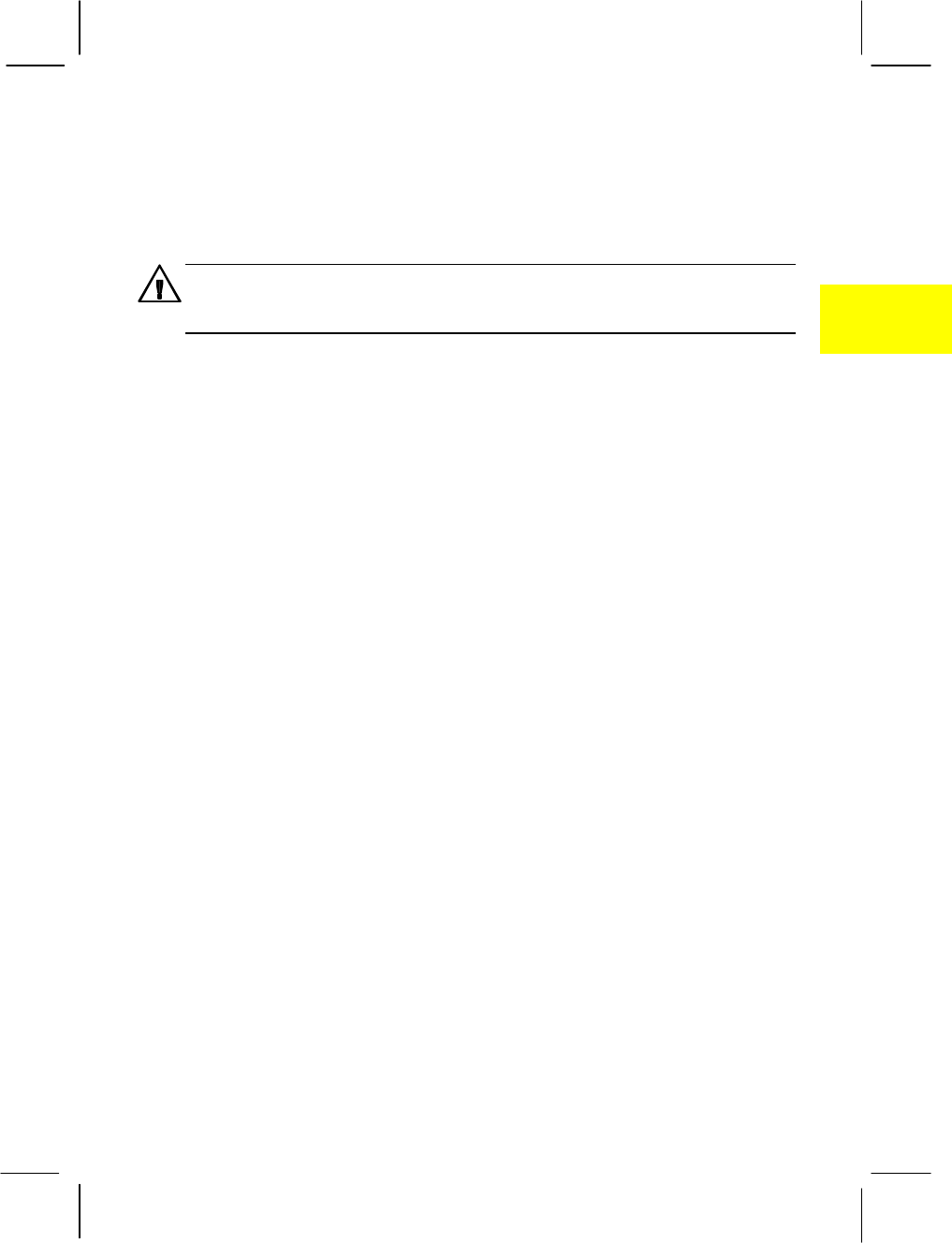
Getting Started 1-13
1
(insert diagram)
Figure 1-7. Connecting the AC Adapter
When disconnecting the AC adapter, unplug from the electrical outlet first and
then from the computer. A reverse procedure could damage the AC adapter or
computer.
Using Battery Power
You can operate the Qbe using battery power only. However, before
you first use battery power, you should initialize the battery pack. (See
Chapter on “Initializing the Battery Pack”)
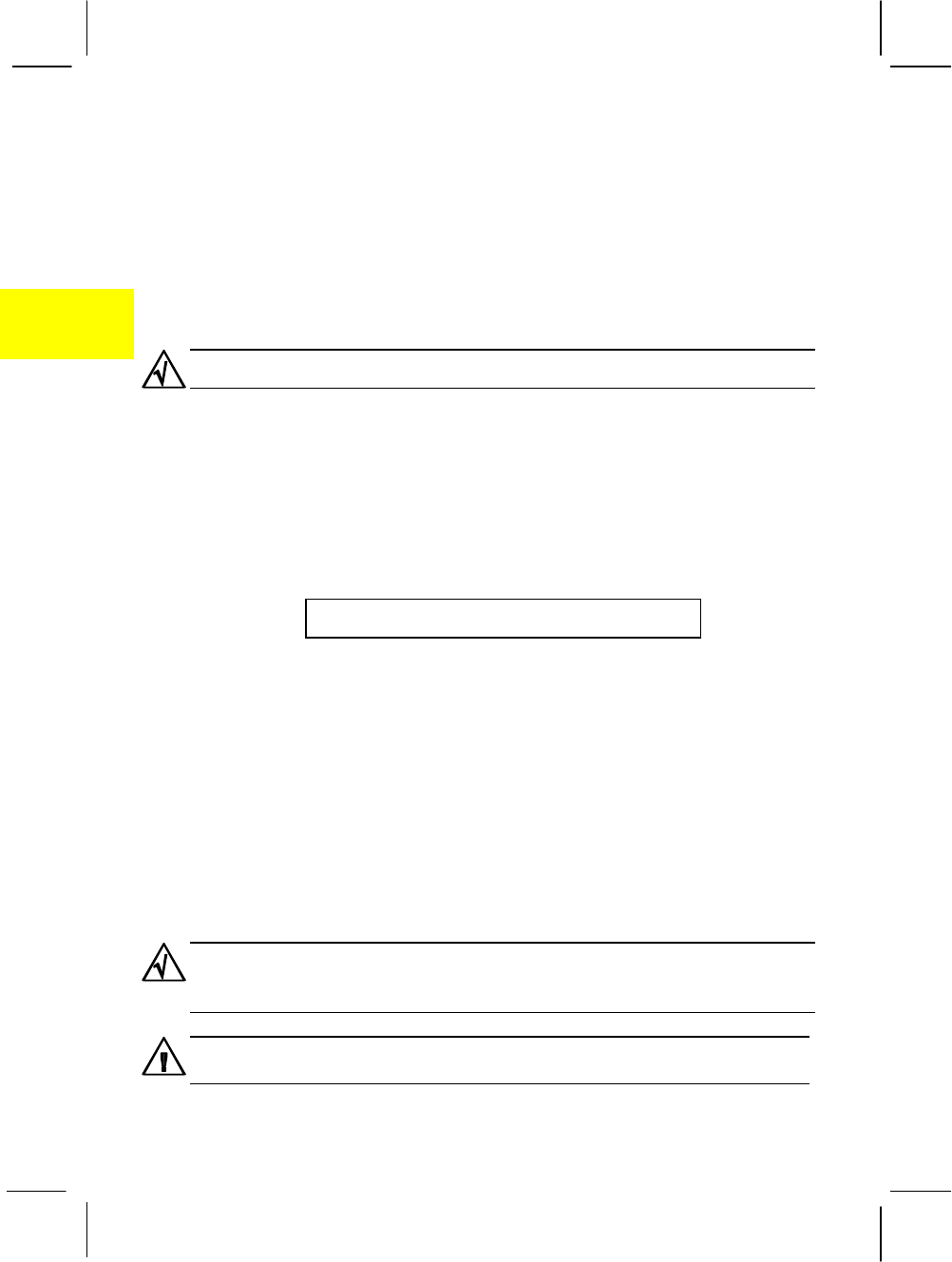
1-14 Getting Started
1
Starting Up
The Qbe starts up with the Windows operating system It
automatically loads the OS after you turn it on. This process is
also called booting.
You have to install an OS if your dealer has not already installed it.
Follow this procedure to start up the Qbe.
1. Make sure the Qbe is connected to an AC power outlet or the
battery pack is charged.
2. Press the power button to turn on the Qbe. The power/suspend
indicator lights green to indicate that the power is on.
Insert diagram
Graphic. Power Button
3. Each time the Qbe is turned on, it performs a Power-On Self Test
(POST). If POST detects any error, you will be asked to re-
configure the computer using the SCU program.
4. When POST successfully completes the check, the Qbe first tries to
boot from drive C, or the CD-ROM depending on the "Boot Device”
setting in the SCU program. (Default setting is Hard Disk C.)
During booting up, you can change the booting device by pressing [Space]
bar the moment the message “System will Boot from C:”, Press <Space> to
change Boot Device or Run Setup” appears at the bottom of the screen.
As a precaution, always boot from drive C. If you are expressly booting from
drive A, make sure the diskette is virus free.
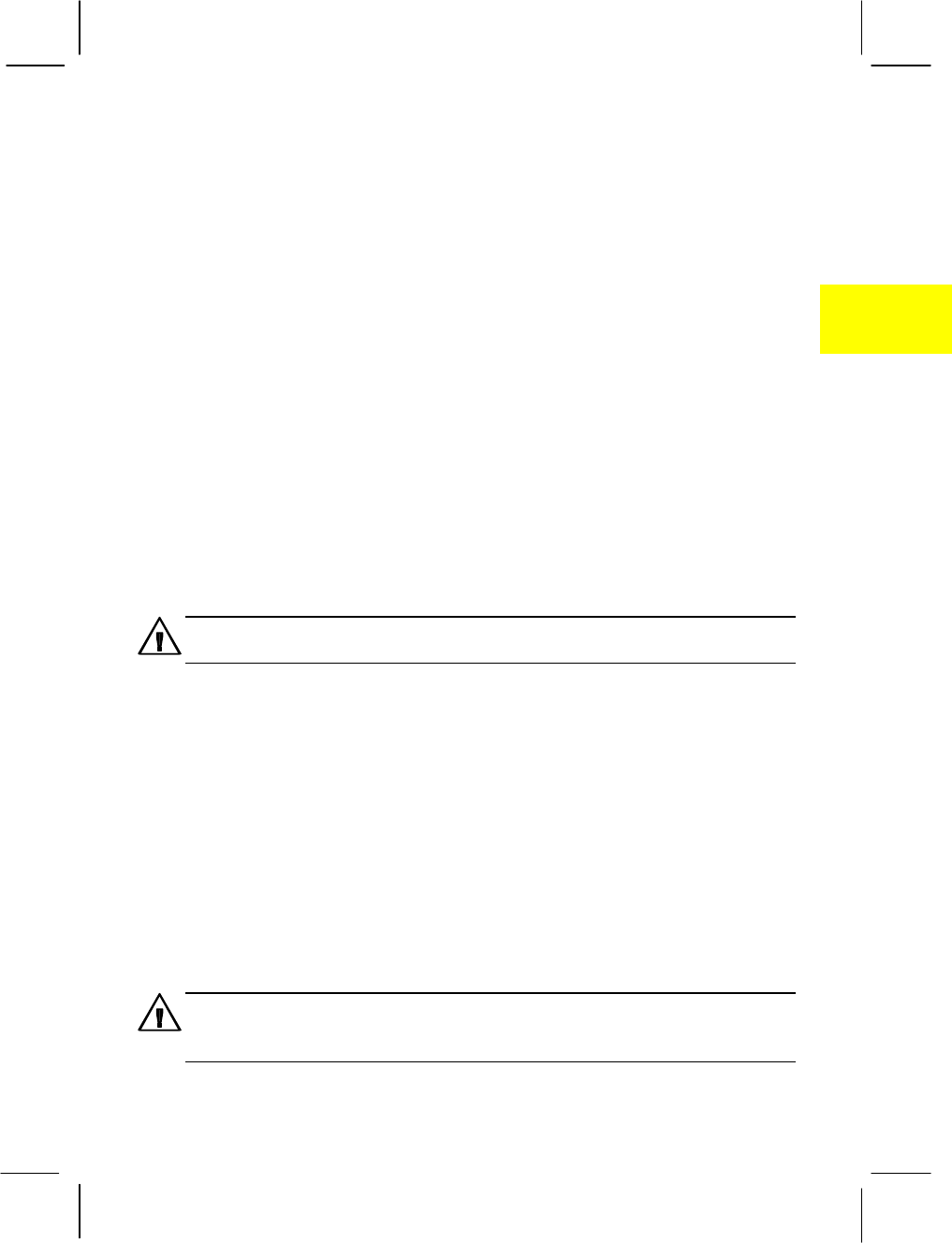
Getting Started 1-15
1
5. After booting up, the Qbe is ready to execute any command.
Adjusting the Display
You attain display clarity by:
:
:
Installing Software Drivers
A driver CD and/or supplement diskettes are supplied with your Qbe.
You need to install drivers for some special features of your Qbe to take
effect. (See Chapter on Driver Information)
Turning Off the Qbe
Do not turn off the computer when the disk drive indicator is on. You may lose
your data by doing so.
1. Make sure to save your data before exiting the program.
2. Remove any CD-ROM.
3. With Windows 98 that only provides the “Shut Down” command,
simply select this command. The computer will turn off
automatically.
Otherwise, press the power button. The computer will enter Power-
On-Suspend, Suspend-to-Disk, or power off mode depending on the
“Power Button Function” setting in the SCU program. (Default
setting is PowerOn Suspend.)
If you have to turn the computer on again immediately after turning it off, wait
for at least five seconds. Turning the computer rapidly off and on could cause
damage to it.

1-16 Getting Started
1
4. Turn off the power of any connected external devices.
5. To disconnect the AC adapter, unplug from the electrical outlet first
and then from the Qbe.

Getting Started 1-17
1
Taking Care of Your Personal Computing Tablet
With good care, you will enjoy long and trouble free operation.
Precautions
• Avoid a location subject to high humidity, extreme temperatures,
mechanical vibration, direct sunlight, heavy dust, or magnetic fields.
• Keep all liquids away from the PCT. Never place any beverage on
top of the PCT.
• Do not abruptly move the PCT from a cold location to a warm one
where the temperature difference exceeds 10°C (18°F). Doing so
could cause condensation inside the unit and damage the storage
media.
• Do not place heavy objects on top of the PCT as this may damage
the display.
• To protect the PCT from overheating, do not cover the ventilation
openings.
• Turn off the PCT and remove the battery pack before installing or
removing a device.
Battery Precautions
• Keep the battery pack away from fire and water.
• Do not short-circuit the battery pack with conductors such as metal
objects and liquids.
• Do not place the battery pack where the temperature exceeds 60°C
(140°F).
• Do not attempt to disassemble the battery pack.

1-18 Getting Started
1
Traveling with the PCT
• Make sure the battery pack is fully charged.
• Make sure the Qbe is turned off.
• Use the AC adapter as the power source whenever possible.
• Hand-carry the Qbe. NEVER check it in as luggage.
• As an added precaution, before traveling with your Qbe, make a
backup of all your important data.
• Before traveling abroad with the Qbe, consult your dealer for the
appropriate AC power cord to be used in the country of your
destination.
• Make sure to take along with you a handy, but good quality, adapter
plug, especially when traveling in Europe. This could be useful in
hotels or when commuting by certain high speed trains with facilities
for businessmen.